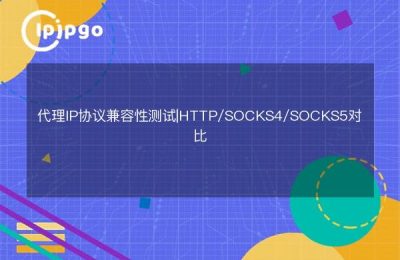
In today's Internet world, the use of proxy IPs is becoming more and more common. Whether it's for privacy protection or for a better online experience, proxy IPs play an important role. And among the many proxy protocols, SOCKS5 proxy is undoubtedly one of the best. This article will detail how to use the API for SOCKS5 proxy authentication.
What is a SOCKS5 Agent?
SOCKS5 proxy is a network protocol that can forward traffic between clients and servers through a proxy server. Unlike HTTP proxies, SOCKS5 proxies can handle not only HTTP requests, but also other types of traffic, such as FTP, SMTP, and so on. This makes it very useful in many scenarios.
Advantages of SOCKS5 Agent
SOCKS5 proxy has many advantages over other proxy protocols:
- Supports multiple protocols: not limited to HTTP, but also FTP, SMTP, etc.
- High anonymity: Hide the user's real IP address to protect privacy.
- Better performance: Due to their design, SOCKS5 proxies are typically faster than other types of proxies.
What is API Forensics?
API authentication is the process of authentication through an API interface. It is commonly used to ensure that only authorized users can access certain resources or services. When using the SOCKS5 proxy, API authentication can help us ensure that only legitimate users can use the proxy service.
How do I authenticate a SOCKS5 agent using the API?
Below we will detail how to use the API for SOCKS5 proxy authentication. Assuming we have an API that provides a SOCKS5 proxy service, we need to perform authentication through the API to ensure that only authorized users can use the service.
Step 1: Get API key
First, we need to obtain an API key from the service provider. This key is usually a unique string that identifies and authenticates the user. The process of obtaining an API key is usually as follows:
- Register for an account.
- Log in to your account.
- Find the API key generation option in your account settings.
- Generate and save the API key.
Step 2: Authentication with API key
Once we have obtained the API key, we can use it for authentication. Typically, we need to include this key in the HTTP request header so that the service provider can identify us. Below is a sample code showing how to do API authentication using Python:
import requests
# API key
api_key = "your API key"
# proxy server address
proxy_url = "http://你的代理服务器地址:端口"
# Request headers
headers = {
"Authorization": f "Bearer {api_key}"
}
# Send request
response = requests.get("http://example.com", headers=headers, proxies={"http": proxy_url, "https": proxy_url})
# Print the response
print(response.text)In this example, we authenticate by including the `Authorization` field in the request header and using the API key as its value.
Step 3: Handling authentication failures
In practice, we need to handle possible authentication failure situations. For example, if the API key is invalid or has expired, the service provider may return an error response. We need to handle the response accordingly. Below is a sample code that shows how to handle an authentication failure:
# Send the request
response = requests.get("http://example.com", headers=headers, proxies={"http": proxy_url, "https": proxy_url})
# Check the response status code
if response.status_code == 401.
print("Authentication failed: Invalid API key")
elif response.status_code == 403.
print("Authentication failed: API key has expired")
print("Authentication failed: API key has expired")
print(response.text)
In this example, we determine whether the authentication is successful or not by checking the status code of the response, and process accordingly based on different status codes.
summarize
In this article, we have learned what SOCKS5 proxy is and how to use API for authentication.API authentication plays an important role in securing resources and services by ensuring that only authorized users have access to proxy services. Hopefully this article will help you better understand and use SOCKS5 proxies and their API authentication.
If you have any questions or need further assistance, please feel free to contact our customer service team. We will be happy to assist you.








